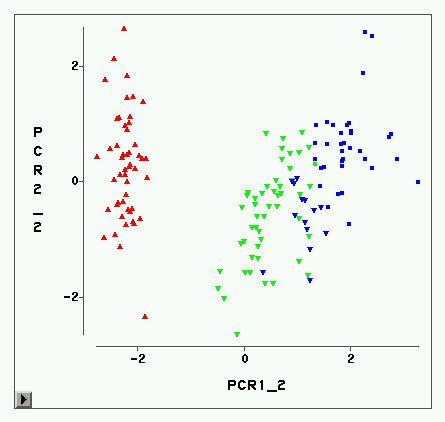Graph-Laplacians and their spectral embeddings play an important role in multiple areas of machine learning. This paper is focused on graph-Laplacian dimension reduction for the spectral clustering of data as a primary application. Spectral embedding provides a low-dimensional parametrization of the data manifold which makes the subsequent task (e.g., clustering) much easier. However, despite reducing the dimensionality of data, the overall computational cost may still be prohibitive for large data sets due to two factors. First, computing the partial eigendecomposition of the graph-Laplacian typically requires a large Krylov subspace. Second, after the spectral embedding is complete, one still has to operate with the same number of data points. For example, clustering of the embedded data is typically performed with various relaxations of k-means which computational cost scales poorly with respect to the size of data set. In this work, we switch the focus from the entire data set to a subset of graph vertices (target subset). We develop two novel algorithms for such low-dimensional representation of the original graph that preserves important global distances between the nodes of the target subset. In particular, it allows to ensure that target subset clustering is consistent with the spectral clustering of the full data set if one would perform such. That is achieved by a properly parametrized reduced-order model (ROM) of the graph-Laplacian that approximates accurately the diffusion transfer function of the original graph for inputs and outputs restricted to the target subset. Working with a small target subset reduces greatly the required dimension of Krylov subspace and allows to exploit the conventional algorithms (like approximations of k-means) in the regimes when they are most robust and efficient.
翻译:图形- 图像- 图像- 图像和光谱嵌入在机器学习的多个领域起着重要作用 。 本文侧重于图形- 图像- 图像- 图像- 图像群集的光谱尺寸减少, 将数据集作为主要应用。 光谱嵌入提供了数据元体的低维的超光度化, 使得随后的任务( 例如, 群集) 容易得多。 然而, 尽管数据维度降低, 但总体计算成本仍然可能由于两个因素而对大型数据集来说令人望而望而却步。 首先, 计算图形- 图像- 图像- 图像部分的eigendecomposition 通常需要一个大的 Krylov 子空间。 其次, 光谱嵌入完成后, 仍然需要用相同数量的数据群集进行操作。 例如, 嵌入数据元集的宽度通常随着计算成本比数据集大小差得多的 k- 。 在这项工作中, 我们将整个数据集的重点从整个数据集转换成一个直线- 直径( 目标子子) 。 我们开发了两个新的算方法, 用于这种低维基流的直径流的直径流的直径流流流流的直径直径直径的直径,, 直径的直径解函数函数函数函数函数函数函数函数函数函数运行函数函数函数函数函数函数函数函数函数函数函数函数函数功能, 将保持一个稳定的离离离离子 。



